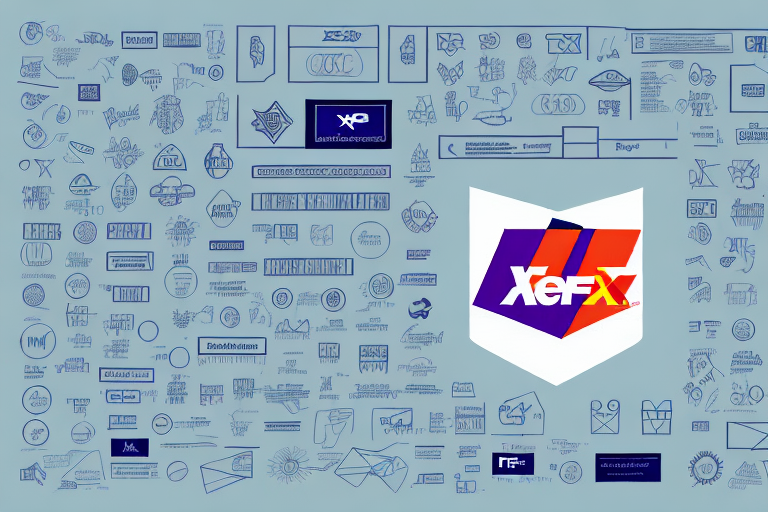Understanding FedEx’s Weather Delay Policy
FedEx has established a comprehensive weather delay policy to safeguard both packages and its employees during adverse weather conditions. This policy is activated when severe weather events, such as hurricanes, snowstorms, wildfires, earthquakes, or civil unrest, impede the safe and timely delivery of shipments. The primary objective is to ensure the safety of FedEx personnel while maintaining the integrity of the shipping process.
Types of Weather Events Covered
- Severe storms and blizzards
- Wildfires and earthquakes
- Civil unrest and other safety-related incidents
These conditions may necessitate rerouting packages or temporarily holding shipments to prevent hazards to delivery personnel and to maintain delivery standards.
How to Request a FedEx Weather Delay Exception
When to Request a Delay Exception
If you anticipate that adverse weather may affect your shipment, or if your shipment is already delayed due to such conditions, you can request a weather delay exception. Situations warranting an exception include natural disasters, road closures, and other uncontrollable events that disrupt regular shipping schedules.
The Request Process
To initiate a weather delay exception, follow these steps:
- Visit the FedEx Tracking page to verify if your package is affected by weather-related delays.
- Contact FedEx customer service via phone or through their website.
- Provide your tracking number and details about the weather conditions impacting your shipment.
- Submit any required documentation, such as weather reports from reputable sources like the National Oceanic and Atmospheric Administration (NOAA).
FedEx will assess your request and determine whether a delay exception is warranted. If approved, you will receive a new estimated delivery date.
Tips for Filing a Successful Weather Delay Exception Request
Provide Comprehensive Documentation
Include detailed weather reports and any other relevant documentation to substantiate your request. Reliable sources such as NOAA or the National Weather Service can strengthen your case.
Submit Requests Promptly
File your request as soon as you become aware of potential delays to ensure timely processing and minimize disruptions.
Explain the Impact Clearly
Detail how the delay affects your business operations or personal circumstances, such as lost revenue or missed deadlines, to emphasize the necessity of the exception.
Follow Up Regularly
After submitting your request, maintain communication with FedEx to stay informed about the status of your exception and to address any additional requirements promptly.
Dealing with Denied Weather Delay Exception Requests
Common Reasons for Denial
- Insufficient or inadequate documentation
- Delayed submission of the request
- Requesting an exception for areas not affected by adverse weather
- Repeated requests from the same account
Next Steps if Denied
If your request is denied, consider the following actions:
- Explore alternative shipping options such as other carriers like UPS or USPS.
- Reschedule your shipment for a later date when weather conditions have improved.
- Contact FedEx customer service for further clarification or potential alternative solutions.
Alternative Shipping Options During Weather Delays
When faced with weather-related delays, considering alternative shipping methods can help ensure timely delivery. Options include:
Other Shipping Carriers
Alternative Shipping Methods
- Ground Shipping: More cost-effective and less susceptible to weather disruptions, though slower.
- Expedited Shipping: Offers faster delivery times with guaranteed dates, ideal for time-sensitive shipments.
Evaluate the pros and cons of each option to determine the best fit for your specific needs.
Planning Ahead for Potential Weather Delays
Schedule Shipments Strategically
Whenever possible, plan your shipments during periods when adverse weather is less likely. Reviewing seasonal weather patterns can help you choose optimal shipping times.
Implement Backup Plans
Develop contingency plans, such as alternative shipping routes or additional inventory buffers, to mitigate the impact of unexpected delays.
Communicate with Stakeholders
Keep customers or recipients informed about potential delays and the steps you are taking to address them. Transparent communication helps manage expectations and maintain trust.
Tracking and Communication During Weather Delays
Monitor Your Shipment
Use FedEx Tracking to stay updated on your package's status. Utilize the FedEx Delivery Manager to customize delivery preferences and receive real-time notifications.
Effective Communication with Recipients
- Provide the tracking number to allow recipients to monitor the shipment.
- Inform recipients about the delay and the reasons behind it.
- Offer options such as rescheduling delivery or choosing an alternative delivery address.
- Consider providing refunds or discounts as compensation for the inconvenience.
Maintaining open lines of communication helps reduce frustration and fosters positive relationships with recipients.
Best Practices for Packaging in Inclement Weather
Proper packaging is crucial to protect your shipment during adverse weather conditions:
- Use extra padding or insulation to safeguard products against extreme temperatures.
- Employ waterproof or weather-resistant materials to prevent damage from moisture.
- Ensure that packages are securely sealed to avoid exposure to harsh weather elements.
Investing in robust packaging materials can significantly reduce the risk of damage and ensure the safe arrival of your shipments.
Staying Informed About Weather Delays and Service Disruptions
Staying proactive in monitoring weather conditions can help you anticipate and respond to potential delays:
- Regularly check your package tracking information on the FedEx Tracking page.
- Stay updated with local weather forecasts from reliable sources like The Weather Channel or NOAA.
- Sign up for FedEx alerts and notifications to receive timely updates on your shipments.
By staying informed, you can take timely actions to mitigate the effects of weather-related disruptions on your shipments.




















